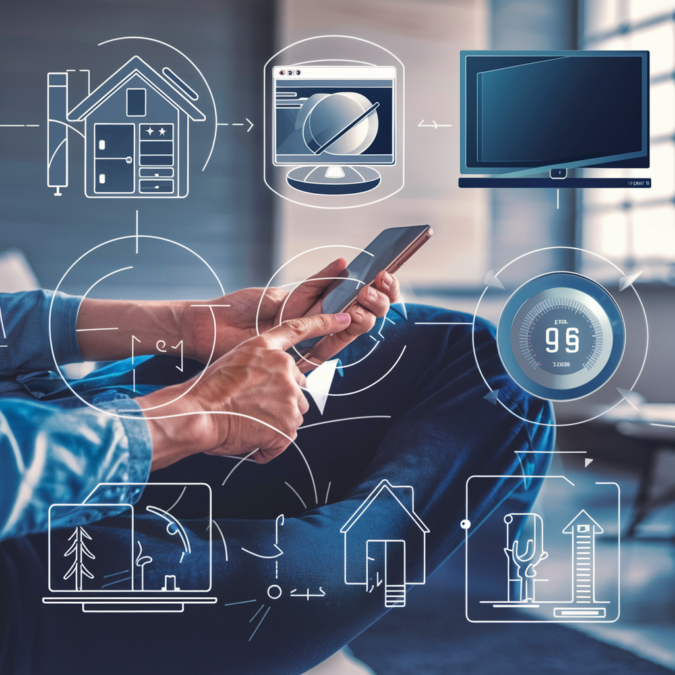The Internet of Things (IoT) is revolutionizing the way we interact with technology. From smart homes to industrial automation, IoT devices are becoming an integral part of our daily lives. Understanding how to control IoT devices effectively is essential for maximizing their benefits. In this article, we will explore various methods and technologies that enable seamless control over IoT devices.
Understanding IoT Device Control
Controlling IoT devices involves a combination of hardware, software, and communication protocols. The primary goal is to enable users to manage these devices efficiently, ensuring they perform their intended functions without issues. Here, we delve into the fundamental aspects of IoT device control.
1. Communication Protocols
IoT devices communicate using various protocols. These protocols ensure reliable data transfer between devices and control systems. Some common protocols include:
- Wi-Fi: Widely used for home automation, offering high data rates and extensive range.
- Bluetooth: Suitable for short-range communication with low power consumption.
- Zigbee: A low-power, wireless mesh network standard ideal for smart home devices.
- Z-Wave: Another mesh network protocol focused on home automation with low power usage.
- MQTT: A lightweight messaging protocol often used in IoT applications for efficient data transmission.
2. IoT Platforms and Hubs
IoT platforms and hubs act as intermediaries between users and their devices. They provide a unified interface for controlling multiple devices and offer features like automation and remote access. Popular IoT platforms include:
- Amazon Web Services (AWS) IoT: Offers a comprehensive suite of services for IoT device management and data analytics.
- Google Cloud IoT: Provides tools for connecting, processing, storing, and analyzing IoT data.
- Microsoft Azure IoT: A flexible platform that supports various IoT scenarios with integrated security features.
- Apple HomeKit: Designed for controlling smart home devices using Apple devices.
- Samsung SmartThings: A versatile hub that supports a wide range of smart devices.
3. Mobile Apps and Voice Assistants
Mobile apps and voice assistants are popular methods for controlling IoT devices. They provide user-friendly interfaces and voice commands for hands-free operation. Some notable examples are:
- Mobile Apps: Most IoT devices come with dedicated apps for Android and iOS, offering features like device management, automation, and notifications.
- Voice Assistants: Devices like Amazon Alexa, Google Assistant, and Apple Siri allow users to control IoT devices using voice commands, enhancing convenience and accessibility.
Setting Up and Managing IoT Devices
Proper setup and management of IoT devices are crucial for ensuring their optimal performance and security. Here, we outline the steps involved in setting up and managing IoT devices effectively.
1. Device Installation and Configuration
The first step in controlling IoT devices is their installation and configuration. This process typically involves:
- Connecting to Power: Ensuring the device is powered on and ready for setup.
- Network Connection: Connecting the device to a Wi-Fi or other communication network.
- Device Pairing: Pairing the device with the IoT platform or hub using a mobile app or web interface.
- Firmware Updates: Updating the device firmware to the latest version for enhanced features and security.
2. Creating Automation and Scenes
Automation and scenes are essential for streamlining the control of multiple IoT devices. Automation involves creating rules and schedules for device actions, while scenes allow users to control multiple devices with a single command. For example:
- Automation: Setting a rule to turn off lights when no motion is detected for a certain period.
- Scenes: Creating a “Good Night” scene that turns off all lights, locks doors, and adjusts the thermostat.
3. Ensuring Security
Security is a critical aspect of controlling IoT devices. Users must implement robust security measures to protect their devices from unauthorized access and cyber threats. Key security practices include:
- Strong Passwords: Using complex and unique passwords for all devices and accounts.
- Regular Updates: Keeping device firmware and software up to date to protect against vulnerabilities.
- Network Security: Securing the home or business network with strong encryption and firewall settings.
- Two-Factor Authentication: Enabling two-factor authentication for added security on IoT platforms and accounts.
Advanced IoT Control Techniques
For those looking to enhance their control over IoT devices, several advanced techniques and technologies can be employed. These methods provide greater flexibility and functionality for complex IoT systems.
1. Edge Computing
Edge computing involves processing data closer to the source of data generation, reducing latency and bandwidth usage. By deploying edge devices, users can perform real-time data processing and control IoT devices more efficiently. Benefits of edge computing include:
- Faster Response Times: Immediate processing of data for time-sensitive applications.
- Reduced Bandwidth: Minimizing data transfer to central cloud servers, saving bandwidth.
- Enhanced Reliability: Local processing ensures continued operation even during network outages.
2. Artificial Intelligence and Machine Learning
Integrating artificial intelligence (AI) and machine learning (ML) with IoT devices enables predictive maintenance, anomaly detection, and intelligent automation. AI and ML algorithms analyze data from IoT devices to identify patterns and make informed decisions. Examples of AI and ML applications in IoT include:
- Predictive Maintenance: Monitoring equipment health and predicting failures before they occur.
- Anomaly Detection: Identifying unusual behavior in devices, indicating potential security breaches or malfunctions.
- Smart Automation: Learning user preferences and automating routine tasks based on usage patterns.
3. Blockchain Technology
Blockchain technology offers a decentralized and secure framework for IoT device control. It ensures data integrity, transparency, and tamper-proof records. Blockchain can be used in IoT for:
- Secure Data Sharing: Enabling secure and transparent data exchange between devices.
- Identity Management: Verifying device identities and ensuring authorized access.
- Smart Contracts: Automating actions based on predefined conditions, enhancing trust and efficiency.
Future Trends in IoT Device Control
The field of IoT is constantly evolving, with new trends and technologies emerging regularly. Keeping abreast of these trends can help users stay ahead in controlling IoT devices. Some notable future trends include:
1. 5G Connectivity
The rollout of 5G networks promises to revolutionize IoT device control by offering ultra-fast data transfer rates and low latency. 5G connectivity will enable seamless real-time communication between devices, supporting applications like autonomous vehicles, smart cities, and industrial automation.
2. Enhanced Interoperability
Interoperability between different IoT devices and platforms is becoming increasingly important. Efforts are being made to develop universal standards and protocols that facilitate seamless integration and control of diverse IoT devices.
3. Augmented Reality (AR) and Virtual Reality (VR)
AR and VR technologies are being explored for their potential in controlling and interacting with IoT devices. These technologies can provide immersive and intuitive interfaces for managing complex IoT systems, enhancing user experience and efficiency.
Conclusion
Understanding how to control IoT devices is crucial for leveraging their full potential. By utilizing the right communication protocols, platforms, and advanced techniques, users can achieve efficient and secure control over their IoT devices. Staying informed about emerging trends will further enhance the capabilities and applications of IoT technology.
Also Read: https://usatimenetwork.com/




